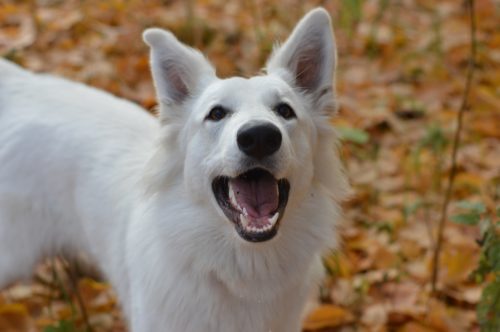There is nothing in the world quite so sad as watching your puppy struggle or suffer. This is your good boy, your best friend, and the pain he is in can break your heart if you don’t understand how to soothe it. However, sometimes that pain may not necessarily be physical and cannot be so simply cured as by administering medication.
Dogs, just like their human counterparts can feel sadness, shame, stress and, even, anxiety. But can dogs have panic attacks? Can the actions of those around them, their environment, mental state, or an underlying medical condition push them into one of those hyperventilating, heart throbbing episodes so many of humans are familiar with? Sadly, the answer is yes.
Types of Anxiety in Dogs
Our furry friends can and will get anxious given the right circumstances. You’ve seen it during Fourth of July fireworks or when he’s on the way to the vet. You’ve had to show him extra attention after you’ve been away for a long time or soothe his whines with kind words when he’s stuck inside his crate.
When anxious, your pooch will hide, cower, tuck his tail between his legs or wag it low as he looks around desperately for comfort. These symptoms are fairly common and are usually caused by one of the four main types of anxiety in dogs: travel anxiety, noise anxiety, separation anxiety, and confinement anxiety. Each of these, if pushed to the extreme, can cause panic attacks in dogs.
Travel Anxiety

Some dogs love a long car ride, but others can’t seem to ever feel quite comfortable in a motor vehicle. But take a second and imagine speeding around at 60 mph without any understanding of how or why this is happening and you’ll gain a little insight into your dog’s state of mind whilst him riding in the car.
Now take that concept and magnify it tenfold when you put your dog on an airplane. The fact of the matter is your good boy will be entirely at a loss for what is happening and may become anxious in these unfamiliar modes of transportation. It is important to be informed on tips for dog travel safety to ensure your pup won’t become anxious or harmed.
Noise Anxiety
Firecrackers, ambulance sirens, or even a storm overhead can send your pup into a fearful tizzy. He will hide, shake, bark wildly and scratch at closed doors, all in an attempt to gain some comfort from the sonic assault on their sensitive ears.
Loud noises can startle anyone, and even cause anxious feelings in some. This is all the more true in dogs than in humans, as their profound hearing can pick up a wider range of sounds than humans’ can as well as hearing what humans hear at a higher intensity.
Separation Anxiety
Leaving your dog alone for long periods of time can give him dog separation anxiety. Your pup loves you more than anything else in the world and when you’re gone—particularly if he’s a dependent breed—then anxiety can ensue in your absence.
The feeling of loneliness can, at times, become overwhelming and your dog may suffer a panic attack. Dogs who have lost their owners have a higher propensity to experience panic attacks brought about by separation anxiety.
Confinement Anxiety
If your pup is forced to be in a small space for even a short period of time, this can trigger confinement anxiety and lead to a panic attack. Dogs are not necessarily meant to inhabit small spaces for long periods of time. They, like us, require external stimulation and the flexibility to run around open places. Remember this if you have decided to crate train your puppy, because if he has spent too much time in confinement there’s a higher risk he will develop anxiety.
Symptoms of a Dog Panic Attack

If your pup is having a panic attack, he may suffer from a number of symptoms similar to those of a human undergoing the same psychological assault. Some symptoms, however, are unique to dogs and owners should familiarize with them.
- Fast Breathing
- Rapid Heart Rate
- Tail tucked between their legs
- Shaking
- Hiding
- Chewing paws
- Whining
- Aggressive barking and growling
- Ears pulled back and tail wagged low
- Biting
- Dilated pupils
- Going to the bathroom indoors
- Overly attentive
Treating Panic Attacks in Dogs
If you notice any of these symptoms in your dog, he may be suffering from a panic attack. Treatment for panic attacks in dogs can include prescription anxiety medication, exercise and, most especially, an outpour of love and attention from you as their owner.




